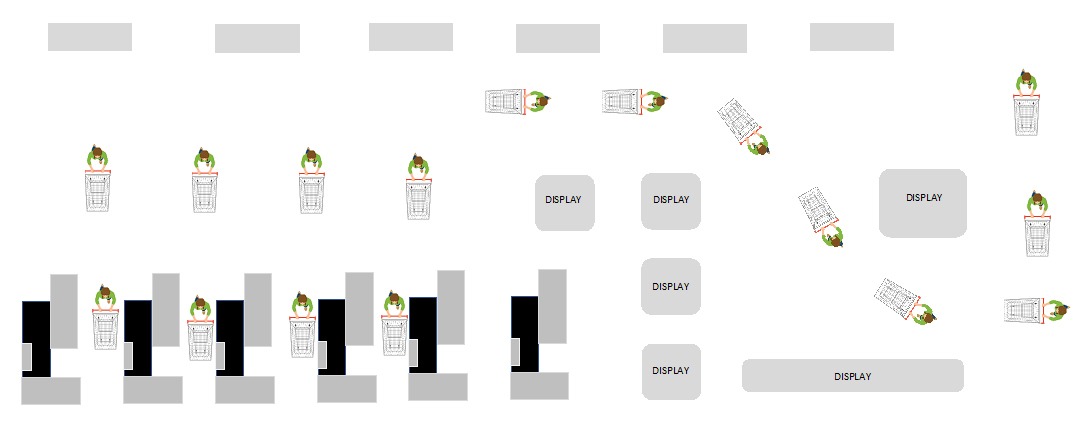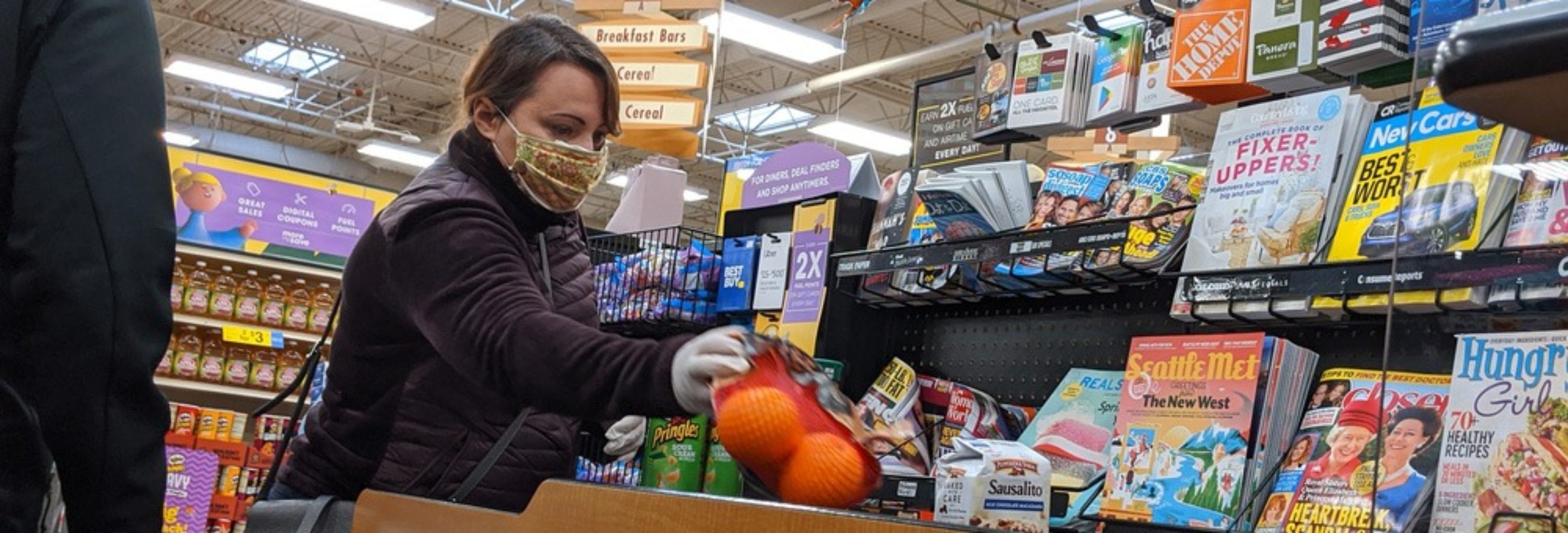The current pandemic has fundamentally altered shopper behavior. Behavioral shifts are multi-dimensional with many expected to remain as we all work through this crisis. To help contextualize these impacts, we have used our shopper behavior expertise to provide insights for future strategic discussions when your planning horizon shifts to a more, longer-term focus. Enclosed is our perspective on potential behavioral impacts on checkout designs.
Pandemic Behavior
Research conducted by Explorer in March during the pandemic shows 65% of shoppers indicated that short checkout lines are highly important, and 75% said self-checkout availability is also important as both facilitate social distancing. The survey also identified almost universally that shoppers desire enhanced cleaning protocols for checkout areas as well as safety screens. A mid-March poll conducted in the US by Shopkick found that 85% of shoppers are taking one or more health precautions when shopping, including disinfecting their hands and shopping carts (92%), shopping at slower times (66%), using debit/credit cards to avoid handling cash (63%) and using self-checkout (59%).
It’s clear that safety, particularly at the checkout area, is critical to shoppers in the new normal. However, our recent in-store observations of checkouts show shoppers trying to exercise social distancing, but with difficulty. The configurations of most checkouts and size of front aisles are not designed for social distancing. Checkout queues are being extended, causing shoppers to queue well beyond the checkout area and interrupt shopping patterns. Wait times are also observed to be longer given stock-up behavior, requiring longer checkout times. Front-end merchandise sales are down and have become “less trustworthy” due to the risk of virus contamination from shoppers checking out in close proximity.
Pre-pandemic, frictionless checkouts were the driving force in checkout design as self-checkouts (SCO) and cashierless designs were the major trends. Explorer now predicts safety – specifically space for social distancing and product safety – will become pervasive design criteria for future checkout designs. In the new normal, stores that provide easy and flexible checkout options that give shoppers control to manage their safety will be viewed as leaders.
How To Win
When assessing your front-end layout to win post-pandemic, consider the following:
1. Accelerate the shift to frictionless models
Shoppers are more open to trying new ways to shop due to the pandemic (i.e. online shopping), particularly if it will result in increased speed and personal safety. This should translate to enhanced trial of new in-store systems/models, including self-checkout apps (Grabango), smart carts (Caper), and sensor-based models (Zippin).
2. Consider additional self-checkouts
SCO systems are likely to increase in importance as they better promote social distancing.
3. Review new placement of front-end products
Product racking above/beside checkout belts will be negatively impacted for the foreseeable future. Review enhanced merchandising of impulse products in the front aisle to capitalize on extended queue lengths and wait times.
Power alley promotes more impulse buying pre checkout

4. Contactless policies
Price-matching/couponing policies and even use of order dividers will need to be reconsidered to promote more of a contactless approach.
5. Queuing
Queue management systems will grow in importance as shoppers increasingly desire quick and hassle-free checkout experiences.
Let us know if we can help
Explorer has several tools to assess early stage designs via Virtual Reality as well as in-store observation/survey tools to assess any in-store tests you are considering.
Marc Inkol is the founder of Explorer Research. Prior to founding Explorer Research, Marc has twenty years of experience working for tier one companies such as Maple Leaf and Kraft.


